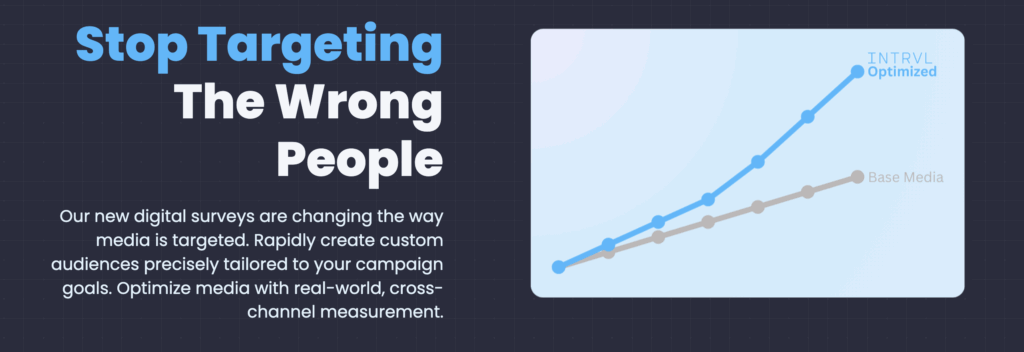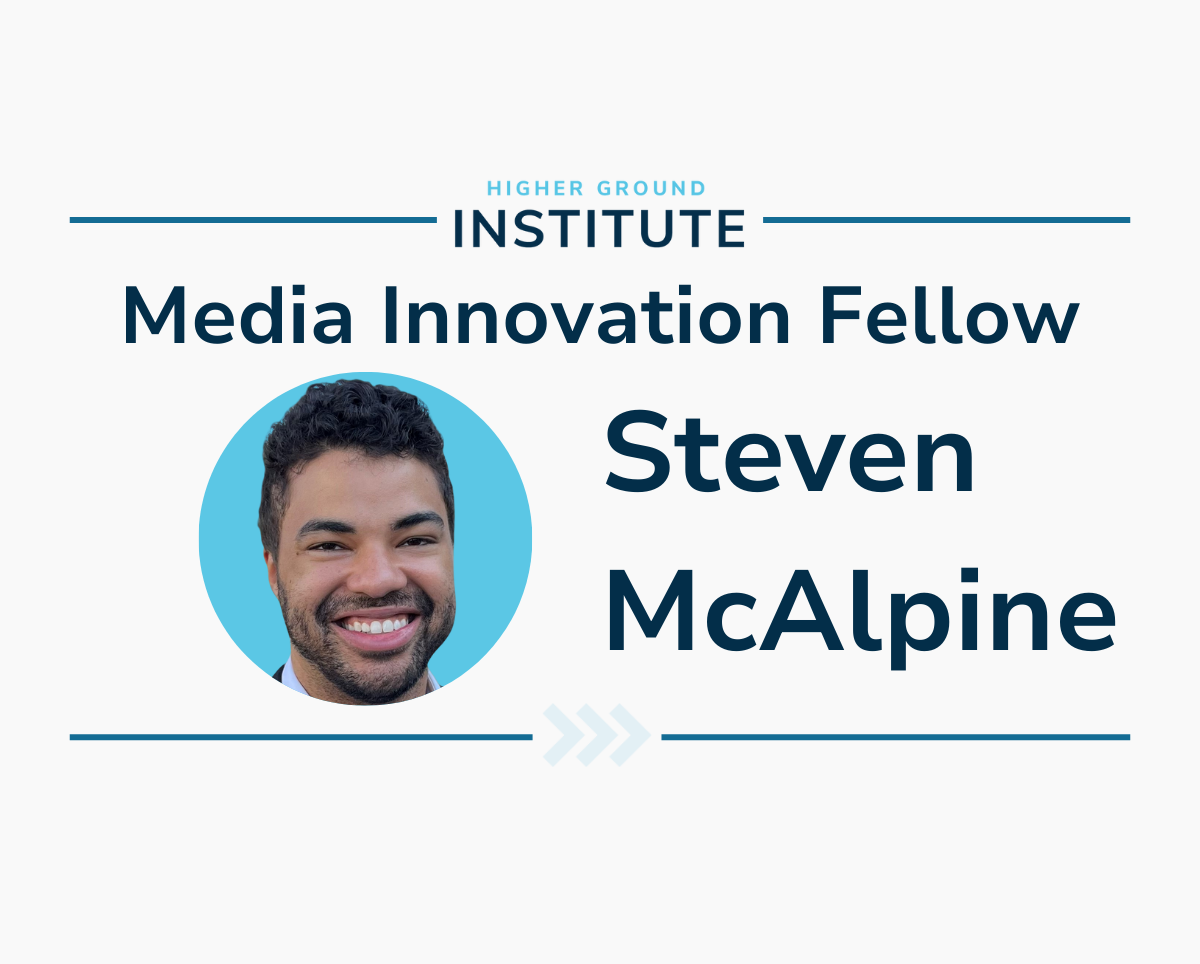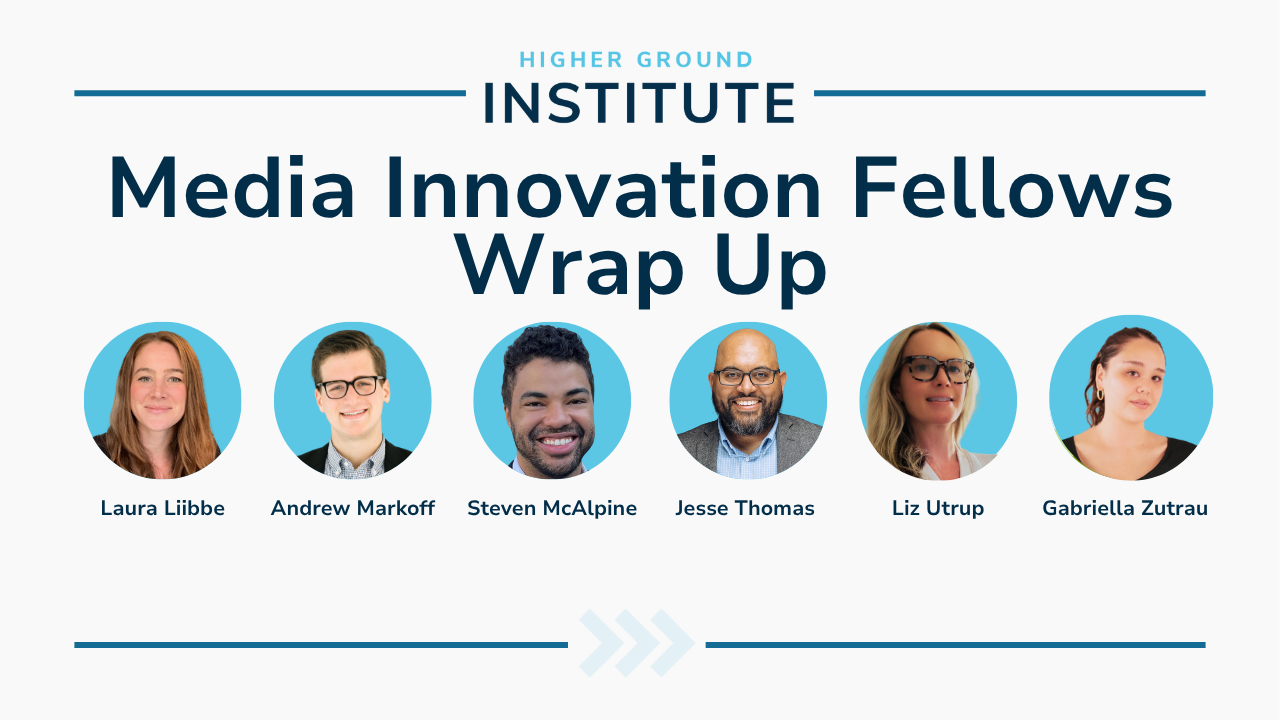As part of our 2025 Higher Ground Institute Media Innovation Fellowship spotlight series, we’re profiling six leaders reimagining how digital media can shape civic engagement and political outcomes. These Fellows are designing tools and strategies that help progressives understand, reach, and move key audiences in an increasingly fragmented information landscape.
Today we’re featuring Steven McAlpine—co-founder and CEO of INTRVL, and a nationally recognized expert in audience measurement for mission-driven campaigns. With a background spanning political analytics and Fortune 500 media strategy, Steven has spent over a decade helping organizations connect with the people who matter most.
Now, through his HGI Fellowship project, Steven is turning his focus to one of the biggest blind spots in progressive outreach: understanding the audiences reached by digital creators. His initiative—Audience Profiling for Creator Programs—aims to equip campaigns and advocacy groups with deeper insights into who creator audiences are, how they engage, and what motivates them politically.
We spoke with Steven about the evolving media ecosystem, the power of audience-first strategy, and how a better understanding of digital influence can help the progressive movement connect more authentically and effectively with the voters who will decide our future.

HGI: What inspired you to apply for the HGI Media Innovation fellowship?
Steven: I was excited about the opportunity to adapt to a new reality where people are in digital ecosystems and how INTRVL’s digital tooling and what I’ve learned about audiences and measurement could be applied to this new problem.
People are learning from others, from their neighbors, from people they follow, who have content that’s political and content that’s not political. They’re learning and they’re having conversations in those spaces. But we don’t have a great understanding about them.
I wanted to see how our tools, INTRVL’s digital tools, could work for creators. Talking with people who have had issues with audience understanding and impact measurement, I started looking for solutions at the end of last year. What can we do to help with these problems?
And then the Higher Ground Institute and Media Innovation Fellowship was right there saying, “We’re here to support the kind of fact-finding and innovation you’re trying to do around creators.” That made it so obvious to apply. I’m glad to be a part of it.
HGI: How does your background and how does INTRVL’s prior work tie into this project?
Steven: I’ve been working in the audience and measurement space now for almost 15 years. I started off in the commercial analytics world, where they’re often 10 years ahead of what happens in the political space. I saw how important it is to start with your audience – whether that’s customers or voters.
If you can start your programs with knowledge of who you want to connect with, you can run much more effective outreach programs. I saw that in commercial work, I’ve seen that in politics, and in paid media.
I was listening to a podcast recently that talked about a father who got radicalized by a YouTuber spouting prophecies from the religious right about 2024. This father made a $10,000 bet with his son on those predictions, started doomsday prepping, and lost his relationship with his wife and daughter.
That just makes me think: how are these spaces influencing people? I was very affected by the personal side—hearing how families can be torn apart by information silos that are unrefuted. I wanted to do something about that: figure out how to reach people that are hard to reach, because it matters.
And with all the digital measurement that INTRVL has done, we’ve seen that what people see and consume changes how they feel, whether or not they think it does. Content slowly influences all of us. We’re often just trying to figure out what we believe based on what others say. So this is important because more people are in these different communities online and that’s influencing how they feel.

HGI: How does this project address those gaps in digital engagement for campaigns?
Steven: Right now, a lot of programs, when they work with creators or work on the relational side, they may have some estimation of audience size. They might break it down by state. They might know how many impressions or clicks it gets. Basically they get some amount of understanding of the scale of their audience.
But composition—who those people are—is rare to know. Are they motivated to vote? What are the issues their audience cares about? Do they lean toward Trump, Harris, or another candidate? Are they engaged with politics or fed up with it? That information is hard to get, especially when working with dozens or hundreds of creators.
Sometimes you can get basic demographics and geographic information but those don’t define us. The US is a melting pot. The attributes that programs use to define audiences are less predictive than they were before. Those basic audience demographics are not enough to build strong, comprehensive, strategic programs.
So this project is about helping get beyond just age, gender and state—to really understand how audiences feel about issues, candidates, and civic engagement.
HGI: In your view, why is it so important for organizations and campaigns to understand the audiences that creators reach?
Steven: Some programs that are all in on the new reality of digital ecosystems. Some organizations are still thinking that broadcast TV is the single best way to reach everybody and will spend the vast majority of budgets there.
But no single channel or method will solve everything. Some people are missing the bigger picture – you need to understand where to reach younger folks, the ones deciding where the nation is going. We have to pay attention to the way the conversations are evolving. Where are these conversations happening, who are they happening with. Voters are moving towards siloed channels, and if we can’t tap into those channels, you’re missing the bigger picture about what’s happening in our culture and where the nation is heading as a whole.
As a data driven practitioner, I know people want the data to make smarter decisions. The more we can provide data that’s actionable, organizations can be smart about which creators they work with in order to reach the pockets of voters they’re targeting. Time and money are scarce. Having data makes it easier to deploy the limited resources more strategically and efficiently.
It also inspires us with a true understanding of who people actually are—not just making assumptions about them. So we need to find where people are communicating, understand them on a deeper level, then build programs from an audience-first, voter-first, and people-first perspective.
HGI: Does having a better understanding of who creators reach helps not just campaigns, but also creators themselves?
Steven: Yeah, definitely. As I’ve been a part of this fellowship, and having more conversations with those that work directly with creators or do relational work, I’ve realized how helpful that can be to creators too. They want to know: what does my audience care about? How do they trend civically or electorally? That helps creators communicate better with their audience.
Some creators are hungry for new insights about their audience. So it’s not just about programs that work with creators. The creators themselves benefit from just new information that’s currently hard to find or inaccessible. We can provide value to them, particularly for those that are so mission-aligned, we can provide the data that makes it easier to do the work they want to do.
HGI: Coming out of this project, what do you hope it achieves?
Steven: Number one: audience understanding. Helping organizations and other companies that work with creators or relational organizers better understand who is being reached.
I’m aiming to build a data product that integrates with systems they already use, making it simple to profile creator audiences, and works both at a program-wide level, aggregating across creators, and at the individual level.
The goal is a data solution that provides insights into audiences’ views on issues and electoral causes—so that advocacy and campaigns on the left can compete and win in critical elections, where content from creators and organizers is shaping outcomes.
I want this program to help us win—and make it easier for both organizations and creators to understand their audiences on things that are currently too hard to find.
HGI: What keeps you optimistic about the future of the progressive movement?
Steven: The fact that we’re trying, that we’re fighting. We didn’t lose by that much recently. Looking at the 2024 election, yes we lost important races, but there was still huge energy to organize and communicate. Falling short doesn’t mean that all is lost.
There are still opportunities to win elections and to win the battle of public opinion about what this nation should be. I think we have better visions for the future: about collaboration, leaving no one behind, lifting all boats instead of just a few at the top.
That vision is exciting to work toward. And the fact that people are still fighting for it makes me optimistic.



